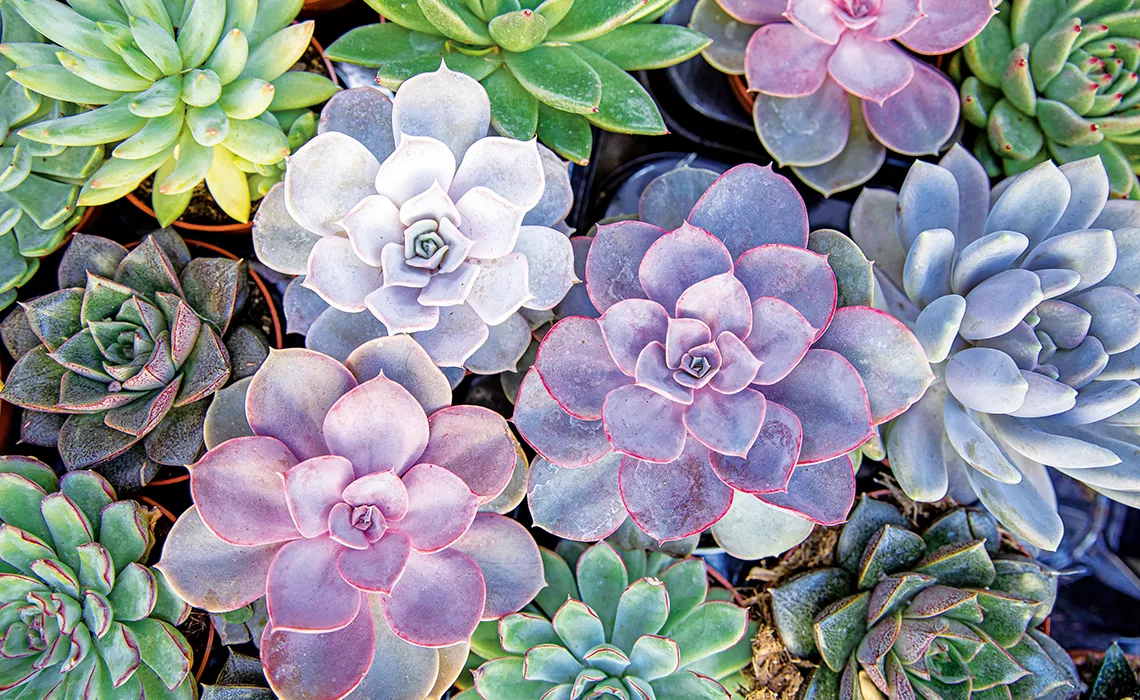Succulents have become a popular choice for plant enthusiasts due to their unique beauty and resilience. Proper care is essential for these hardy plants to thrive, and one of the key elements is mastering the art of watering.
Understanding the Unique Needs of Succulents
Succulents, with their thick fleshy leaves and stems, are adapted to survive in arid conditions. Their ability to store water allows them to endure periods of drought, making them low-maintenance plants. However, this doesn’t mean they can thrive without water altogether. Understanding the specific water requirements of succulents is crucial for their overall well-being.
Choosing the Right Soil
The journey to proper succulent watering begins with selecting the appropriate soil. Succulents prefer well-draining soil that prevents water from accumulating around their roots. A mix specifically formulated for cacti and succulents, enriched with materials like perlite or sand, ensures optimal drainage, preventing root rot—a common issue associated with overwatering.
The Importance of Pot Selection
The choice of pots plays a significant role in succulent care. Opt for pots with drainage holes to facilitate excess water runoff. This prevents water from pooling at the bottom of the pot, safeguarding succulents from potential root rot. Additionally, choosing a porous material like terracotta aids in air circulation, promoting a healthy root system.
Establishing a Watering Routine
Creating a consistent watering routine is essential for succulents to thrive. While succulents can withstand periods of drought, they still require regular watering. Aim for a schedule that allows the soil to dry out completely between watering sessions. This mimics the natural conditions of their native habitats, promoting healthy root development.
The Rule of Thumb for Succulent Watering
A fundamental aspect of proper succulent watering is the “soak and dry” method. When it’s time to water, thoroughly saturate the soil until water seeps out from the drainage holes. Allow the soil to dry completely before watering again. This method ensures that the entire root system receives moisture, preventing the roots from becoming waterlogged.
Factors Influencing Watering Frequency
Several factors influence how often succulents should be watered. The climate, season, and indoor humidity levels all play a role in determining the frequency of watering. During warmer months, succulents may require more frequent watering, while in cooler months, their water needs decrease. Additionally, indoor succulents may need less water than those planted outdoors due to the controlled environment.
Monitoring Soil Moisture
To master succulent watering, it’s crucial to be attentive to the moisture levels in the soil. Invest in a moisture meter or simply use your finger to assess the dryness of the soil. Insert your finger into the soil up to the second knuckle; if it feels dry, it’s time to water. Monitoring soil moisture prevents overwatering, a common mistake that can lead to root rot and other issues.
Water Quality and Succulent Health
The quality of water used for succulents is often overlooked but can impact their overall health. Avoid using water high in salts or minerals, as this can accumulate in the soil and harm the plant. If tap water is the only option, allow it to sit for 24 hours to let chlorine evaporate. Alternatively, collect rainwater, which is naturally pure and beneficial for succulents.
Addressing Seasonal Variations
Succulents, like many plants, experience changes in growth and water requirements based on the seasons. During the active growing season, typically spring and summer, succulents may need more frequent watering to support their increased metabolic processes. In contrast, during the dormant phase in fall and winter, reduce watering to accommodate their slowed growth.
Recognizing Signs of Overwatering and Underwatering
To truly master succulent watering, it’s essential to recognize the signs of both overwatering and underwatering. Overwatered succulents often exhibit soft, mushy leaves and a foul odor emanating from the soil. Underwatered succulents, on the other hand, display shriveled or wrinkled leaves. By observing these signs, you can adjust your watering routine accordingly.
Advanced Techniques for Succulent Watering
For seasoned succulent enthusiasts, advanced watering techniques can further enhance plant health. Implementing bottom watering, where the pot is placed in a tray of water, allows the plant to absorb moisture from the roots up. Additionally, using a spray bottle to mist the leaves provides supplementary hydration, especially in dry indoor environments.
Conclusion
Mastering the art of succulent watering is a journey that requires a deep understanding of these resilient plants’ unique needs. By selecting the right soil, pots, and adopting a consistent watering routine, you can create an environment where succulents not only survive but thrive. Pay attention to the subtle cues your succulents give, and with time and care, you’ll develop the expertise needed to ensure the long-term health and vibrancy of your beloved succulent collection.

